Define peritoneum and describe the layers of peritoneum.
Definition: Peritoneum is double layered serous membrane sac which lines the wall of abdominopelvic cavity and ensheaths some of the abdominal viscera. It comprises a thin layer of connective tissue and simple squamous epithelium (mesothelium).
*Peritoneum covering the ovary is lined by cuboidal cells.
The peritoneum consists of two layers:
Outer parietal layer
- It lines the inner surface of the walls of abdominopelvic cavity from which it is separated by extraperitoneal tissue.
- Is derived from somatopleural layer of the lateral plate mesoderm.
- Is innervated by somatic nerves and is therefore pain sensitive.
Inner visceral layer
- Covers the outer surface of the some of the abdominal and pelvic viscera (forms the serosa of the wall of the viscera).
- Is derived from splanchopleural layer of the lateral plate mesoderm.
- Is innervated by autonomic nerves and is therefore pain insensitive.
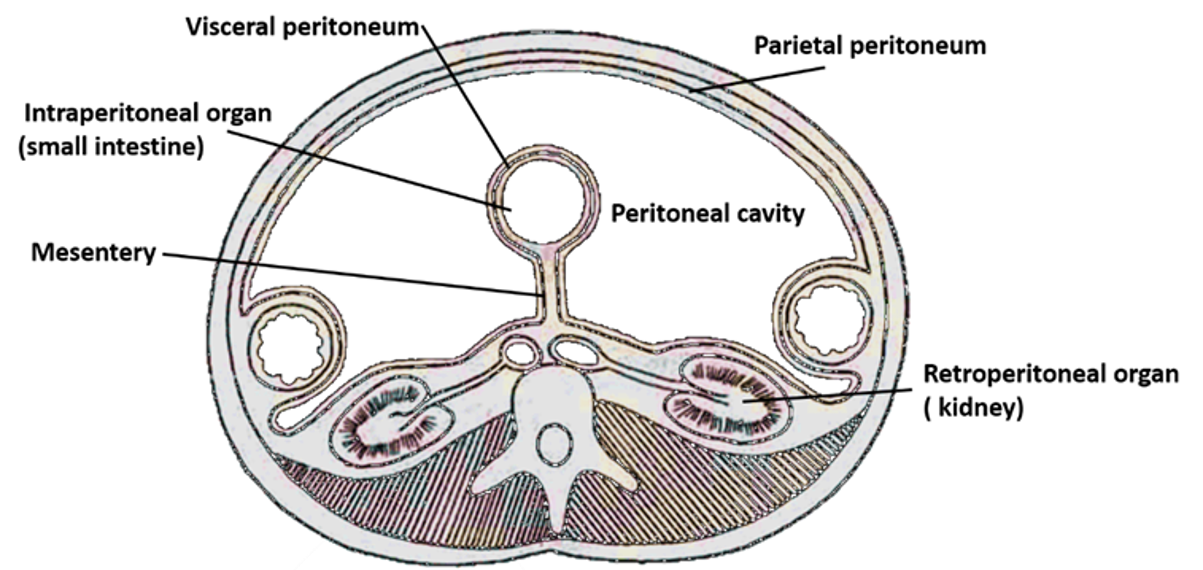
Peritoneal cavity: The two layers of the peritoneum are separated from each other by a potential space, peritoneal cavity. The peritoneal cavity contains thin film of serous fluid which is secreted by the lining squamous cells of the peritoneum.
What are the functions of peritoneum?
Following are the functions of peritoneum:
- The peritoneal fluid secreted by the peritoneum into the peritoneal cavity lubricates the adjoining surface of viscera and reduces friction during movements.
- Protect viscera, as it contains phagocytic cells which guard against infection.
- Serves as a mean of conveying blood vessels, lymphatics, and nerves to these organs.
- Storage of fat.
- Healing of wounds: mesothelial cells can transform themselves into fibroblast and promote healing of wounds.
- Greater omentum may physically limit the spread of intraperitoneal infections, as it can wrap itself around area of infection.
Describe the various folds of peritoneum.
Folds of peritoneum
- connect viscera to the abdominal wall (the visceral peritoneum becomes continuous with the parietal layer along these peritoneal folds).
- also extend between the viscera.
- provide mobility to the viscera
- provide passage to nerves and vessels.
- are named according to the organs they are associated with:
Omentum
These are folds of peritoneum associated with stomach.
Mesentery
Peritoneal fold that ensheaths the jejunum and ileum parts of small intestine and attaches it to the posterior abdominal wall.
Mesocolon
The peritoneal folds that suspend certain parts of large intestine viz:
- Transverse mesocolon
- Sigmoid or pelvic mesocolon
Ligaments
All other folds of peritoneum that connect viscera to abdominal wall or to each other.
- Falciform ligament – connecting liver to anterior abdominal wall.
- Coronary and triangular ligaments – connect liver to diaphragm.
- Gastrophrenic ligament – between stomach and diaphragm.
- Gastrosplenic ligament – between stomach and spleen.
- Lienorenal ligament – between spleen and left kidney.
Enumerate the intraperitoneal organs.
Intraperitoneal organs are theorgans completely surrounded by peritoneum. They are
- Stomach
- Liver
- Spleen
- 1st part of duodenum
- Jejunum and ileum
- Appendix
- Caecum
- Transverse and sigmoid colon
- Liver
- Spleen
- Uterus (Females)
- Fallopian tubes (Females)
- Ovaries
Enumerate the retroperitoneal organs.
Retroperitoneal organs are located behind the peritoneum are:
- Most of the duodenum
- Pancreas
- Kidneys
- Suprarenal glands
- Ureter
- Ascending colon
- Descending colon
- Rectum
What are the subdivisions of Peritoneal Cavity?
The two subdivisions of peritoneal cavity are:
- Larger greater sac
- Smaller lesser sac
Greater sac
It is the main part of the cavity that extends from the diaphragm to the pelvis. It is further subdivided into:
- Supracolic compartment: Occupies the upper anterior part of abdominal cavity above the transverse colon.
- Infracolic compartment: Occupies the lower abdominopelvic cavity below the transverse colon.
Lesser sac
It is also known as omental bursa is a diverticulum of the greater sac mainly located behind the stomach and lesser omentum.
* Greater and lesser sac communicate with each other via epiploic foramen.
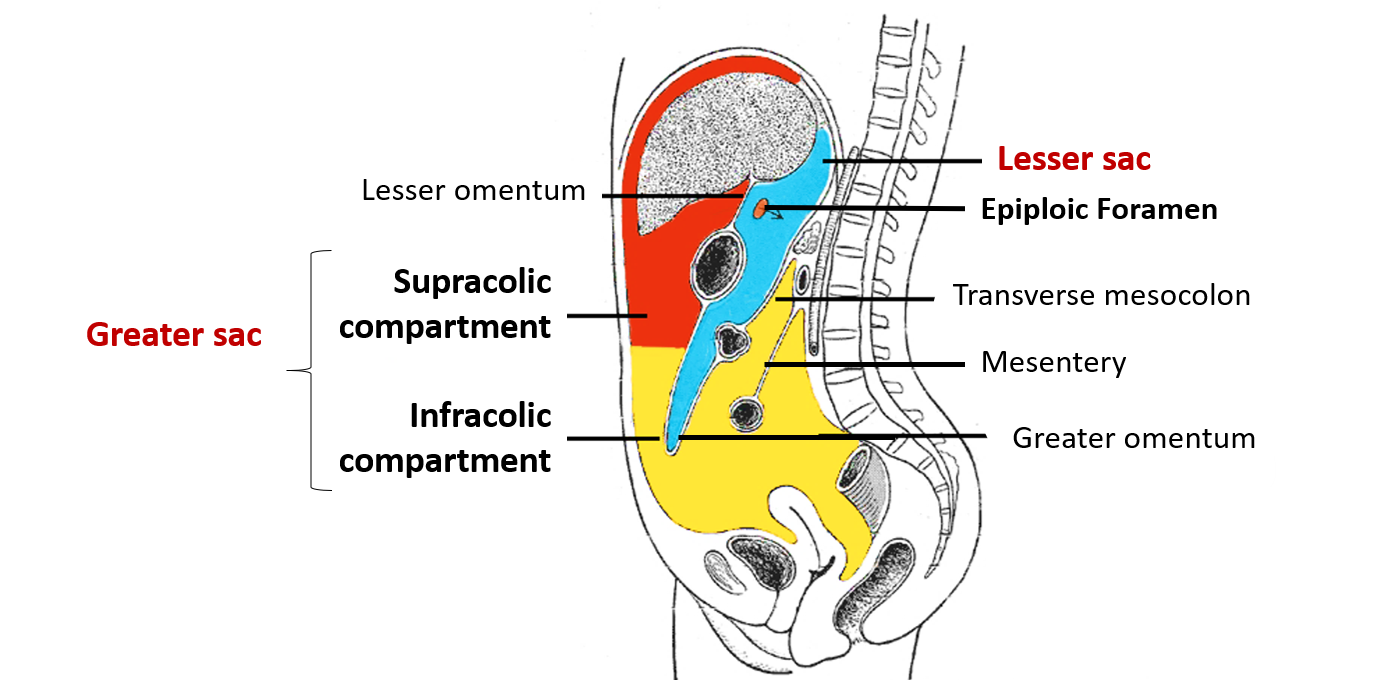
Draw a labelled diagram showing vertical disposition of peritoneum.
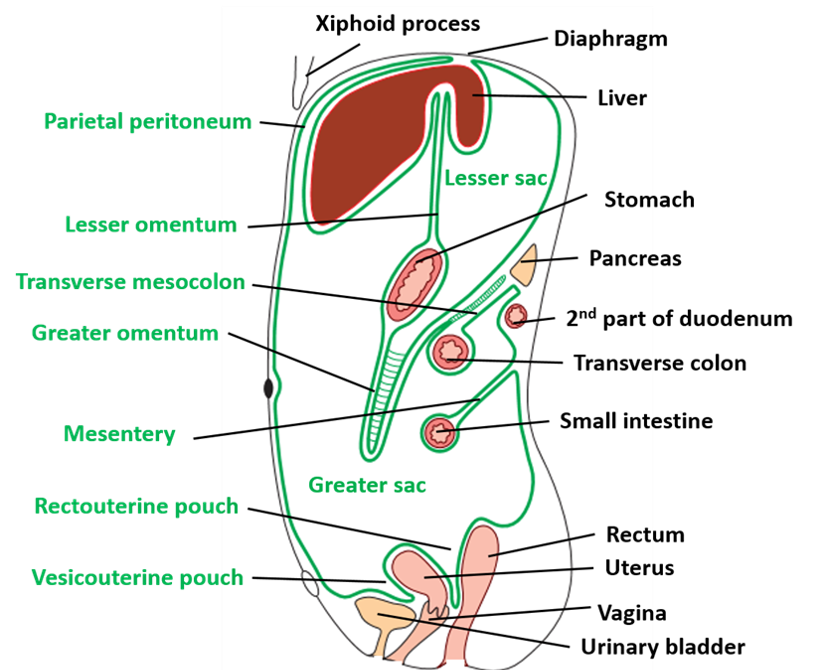
Draw labelled diagram showing horizontal disposition of peritoneum.
Transverse section of abdomen at the level of epiploic foramen
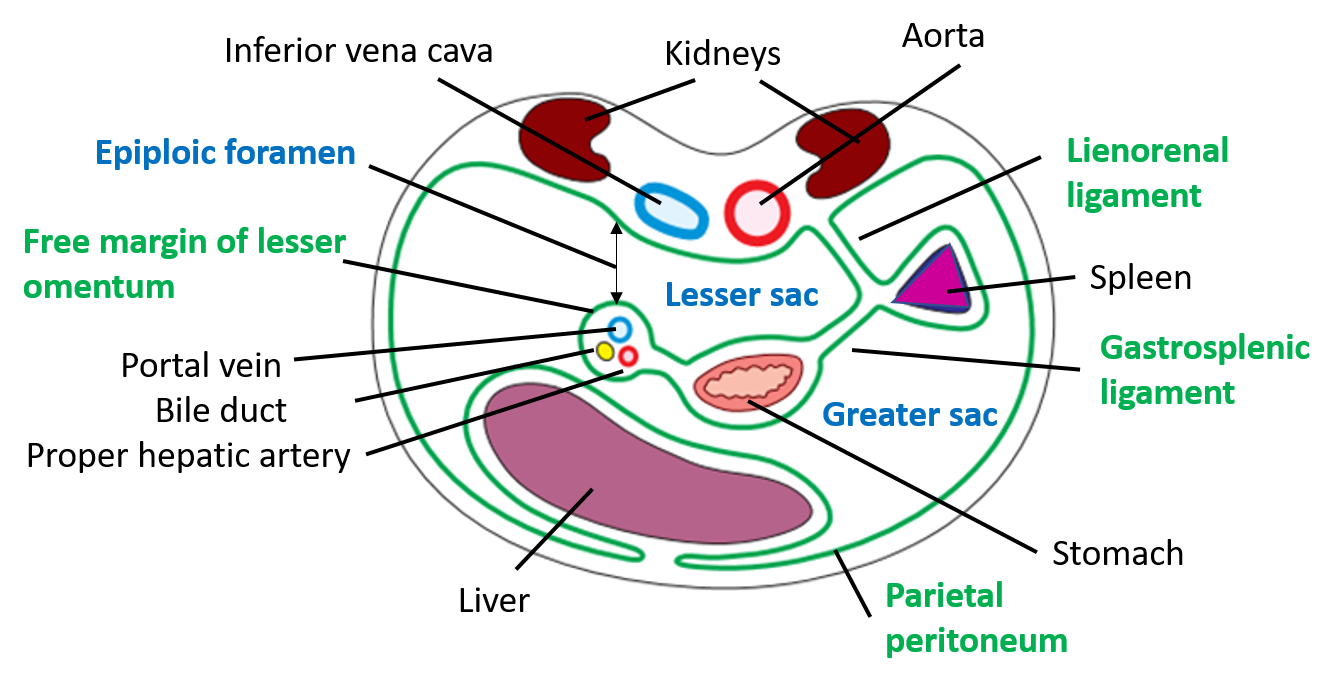
Transverse section of abdomen at the level of L4 vertebra (below umbilicus)
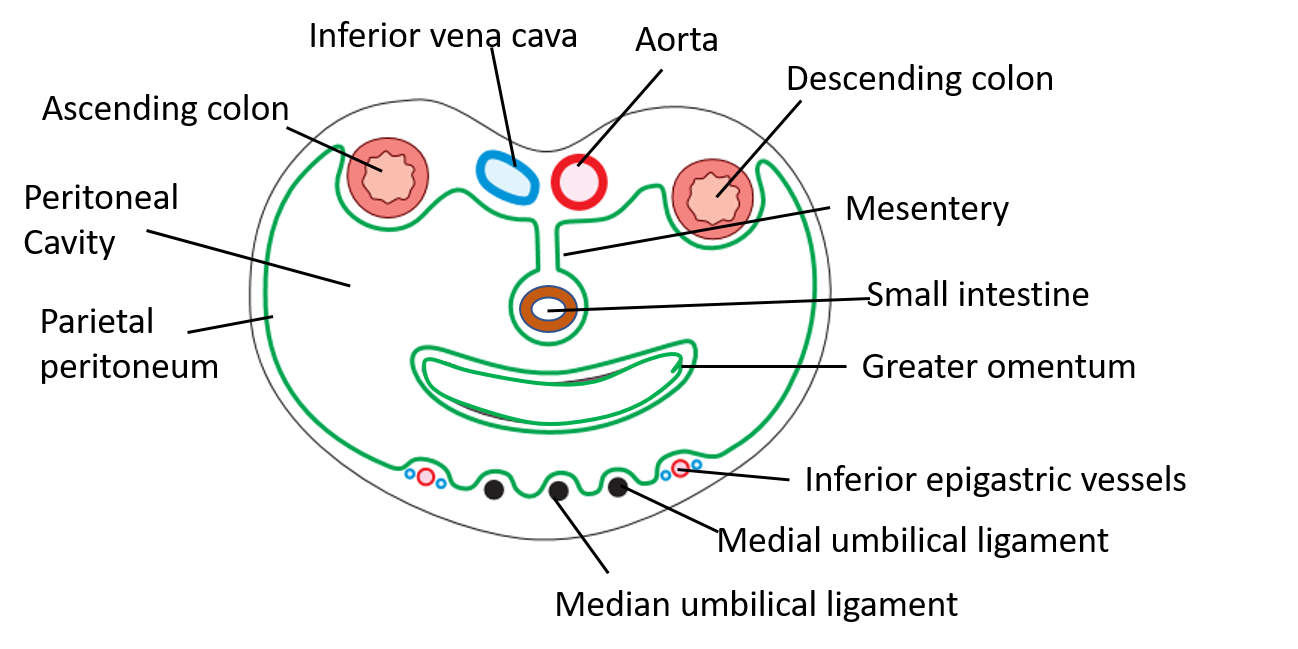
Applied Aspects
Peritoneal Dialysis
In peritoneal dialysis, a solution is introduced through a tube into the peritoneal cavity. The fluid is left there for a prescribed amount of time to absorb waste products, and then removed through the. Through the mechanism of diffusion, waste products are removed from the blood.

Please add morrison’s pouch
Thanks good job